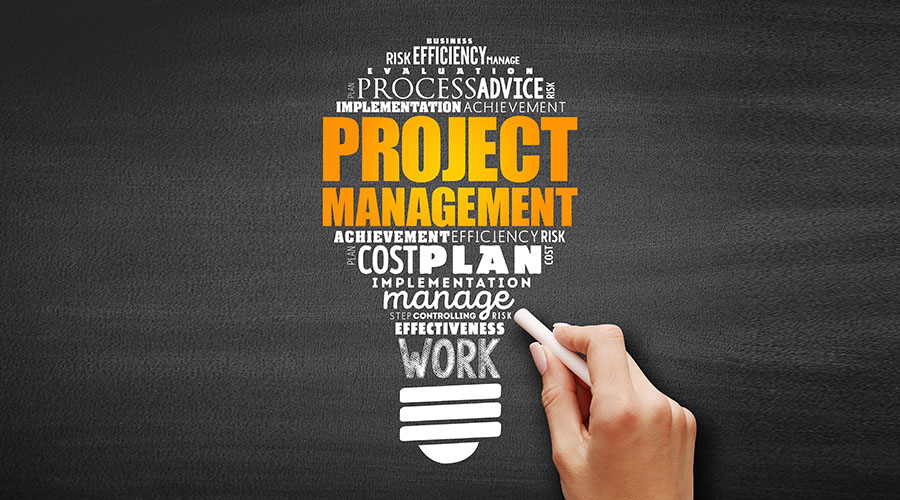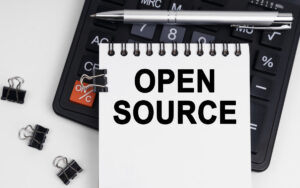A well-organized project can mean the difference between success and failure. Conversely, a failed project could decide whether a company remains competitive and thriving or ends up on the scrap heap of failed businesses. For this reason, project teams require project management delivered by a competent project manager.
This article explores the five stages of project management and their importance in creating and executing a successful project. We will cover each stage separately, from the project initiation phase to the final phase, project closure.
So let’s begin our journey by defining project management steps.
What Are the Project Management Steps in a Project Life Cycle?
According to the Project Management Institute (PMI)’s PMBOK Guide (short for Project Management Body of Knowledge), the first and last word on project management, there are five distinct phases of project management, which we’ll explore in greater detail later:
- Project Initiation Phase
- Project Planning Phase
- Project Execution Phase
- Project Monitoring and Controlling Phase
- Project Closure Phase
The project life cycle is the framework of the five stages of project management that help turn an idea into reality with minimal fuss. A sold project life cycle helps outline and quantify the critical project management steps needed to make the project stakeholders happy.
Of course, the term “project” is very specific in the business world.
Also Read: Understanding Scope in Project Management: Definition and Importance
Wait, There’s a Specific Business Definition for “Project?”
Yes, there is in terms of businesses and the project management process. Projects are defined as a one-time activity, a set of interdependent tasks that produces a specific desired outcome designed to achieve a goal for the organization.
Every project has the following characteristics:
- First, it creates something new or improves an existing thing
- It’s a limited-time endeavor with a set start and finish
- It operates within particular constraints: time, cost, project scope, quality, risk, and resources
- Finally, it’s done when the project’s goals are achieved
Now that we have that sorted out, let’s look at the phases of project management.
What Are the Five Stages of a Project Life Cycle?
We know the project is divided into five project management steps, and we need to examine each in detail.
Project Initiation Phase
Here we turn an idea into a worthwhile goal. In this stage, you develop a business case and broadly define the project by determining the need for the project and creating a project charter. The project charter is a vital document that includes details like project constraints, project goals, the appointment of a project manager, project budget, expected project timeline, etc.
After you define the project’s objectives and project scope, you must identify key project stakeholders, defined as the people who will be involved in the project. So, you must create a stakeholder register that quantifies the roles, communication requirements, designation, and influence.
Project Planning Phase
In this stage of project management, you will create a roadmap for the project. Expect this phase to take up about half of the project’s timespan unless you’re using a modern project methodology such as agile. This phase involves identifying the technical requirements, creating a communication plan, developing a detailed project schedule, and setting up the project’s goals and deliverables. Most project managers use SMART or CLEAR methodologies to set up the project.
SMART
- Specific
- Measurable
- Attainable
- Realistic
- Timely
CLEAR
- Collaborative
- Limited
- Emotional
- Appreciable
- Refinable
The project manager needs to identify possible pain points and decide how to mitigate issues and risks. Although this phase takes up the lion’s share of project time, it’s an investment. A well-thought-out project saves resources and time in the long run.
Project Execution Phase
Here is where the actual work gets done. The project manager establishes efficient workflows and carefully monitors the team’s progress, allocating and managing the project’s resources. In addition, the project manager consistently maintains effective collaboration between the project stakeholders, ensuring everyone remains on the same page and the project carries on smoothly and with minimal issues (ideally, NO issues).
This project management step and the next phase of project management typically run sequentially.
Project Monitoring and Controlling Phase
The project manager establishes Critical Success Factors (CSF) and Key Performance Indicators (KPI) to ensure everyone stays on the original plan. The manager is also in charge of quantitatively tracking the costs and effort during the process. This tracking ensures the project remains within the budget and helps to set the pace for future projects. This phase and the execution phase are the two project life cycle phases that are non-sequential.
Project Closing Phase
And we come to the final project management step. Project closure comes after the final delivery and indicates the end of the project after. The project manager hands over the deliverables and closes any contracts for external talent hired specifically to work on the project, completing the necessary paperwork, crossing the t’s, and dotting the i’s.
Once the project ends, teams typically hold a reflection meeting to discuss their successes and failures during the project’s life cycle. These meetings help ensure continuous improvement and enhance the team’s overall productivity in future projects.
Finally, the project manager (or designated team member) compiles a detailed report covering every project aspect. Once the results listed in the report are approved by management, it is securely stored to benefit other project managers leading future projects.
Also Read: Mastering Project Manager Skills: A Comprehensive Guide
Types of Project Management Life Cycle
Unsurprisingly, there is more than one type of project management life cycle. Here’s a breakdown of the various project management life cycle types. Each has its pros and cons, and it’s up to the organization and what kind of projects it’s doing to decide which is the best fit.
There are several types of project life cycles, each with its own project management steps and processes. Some of the most common types include:
- Waterfall. Waterfall is the most traditional life cycle. It’s a linear, sequential approach where each project phase must be completed before going on to the next. The waterfall method is typically used for projects with well-defined requirements and a single clear end goal.
- Agile: Agile is a flexible, iterative approach emphasizing fast development and continuous improvement, reminiscent of CI/CD in DevOps. It is often used in projects with quickly changing requirements or unclear goals.
- Iterative. Iterative is a cyclical life cycle approach involving repeating the project life cycle multiple times to refine and improve the project. It is typically used in projects with complex requirements or high levels of uncertainty.
- Hybrid. As the name implies, this approach fuses elements of two or more project management types. As a result, it is often used in projects with very different characteristics and needs a tailored approach to accommodate these differences.
- Lean. The lean approach draws on Lean manufacturing principles, emphasizing waste reduction, value maximization, and team empowerment.
- Kanban. This life cycle approach is a lean and just-in-time manufacturing (JIT) scheduling system. Kanban is a visual process-management system that informs team members about what, when, and how many products to produce.
Why Is the Project Life Cycle Important?
Although we’ve touched on the importance of a project life cycle and the related project management steps, let’s spell it out in clear terms. A project life cycle provides the project manager with a clearly defined path through the project. The life cycle describes where the project begins and the sequence of each stage of project management. In addition, it serves as a tool to define parameters and goals, list resources, and warn of possible pitfalls. So, no matter how crazy things get, the team always has an organized resource and definitive guide to turn to and regroup.
The Vital Elements Found in Any Project Management Process Group
There are certain critical elements found in every project management process group.
- Communication. Project managers must ensure that all communication responsibilities are clear to the team members, project board, stakeholders, and any related third parties. Proper communication is an absolute necessity for a successful project.
- Integration. How does the project impact the department or other areas of the business? Project managers must understand how the project will interface with the organization’s other projects or functions or affect other companies.
- Phase Management. This element means each phase must be completed before starting the next one. The project manager must be fully aware of all deliverables that must be completed, delivered, and accepted by the stakeholders.
- Procurement. This element involves hiring third parties, outside contractors, to handle specialized tasks within the project.
Also Read: 9 Project Management Techniques and Tools That Actually Work
Would You Like to Become a Great Project Manager?
If you want to take your project management skills to the next level, you should sign up for this expert project management bootcamp.
In collaboration with the University of Massachusetts, Simplilearn will help transform you into a qualified digital-age project leader in a six-month Post Graduate Program in Project Management.
This certification course, aligned with PMI-PMP® and IASSC-Lean Six Sigma, offers live online interactive classes and real-world capstone projects, helping you to acquire skills such as:
- Agile Management
- Customer experience design
- Design Thinking
- Digital Transformation
- Leadership Skills
- Lean Six Sigma Green Belt LSSGB
- Project Management
- Project Risk Management
You will earn your PMP certificate and 146 PDUs that help maintain your CCR for PMI-related certifications. In addition, you get a membership to the UMass Amherst Alumni Association.
According to Glassdoor.com, PMP-certified project managers in the United States make a yearly average of $110,192, with a low range of $68K and a high end of $182K. If you can accumulate ten years of project management experience, you can earn $125,916.
Sign up today and take that first vital step into the world of project management
You might also like to read:
What Does a Project Manager Do? Role & Responsibilities
How to Build a Killer Project Management Resume
13 Key Project Management Principles and How to Use Them







